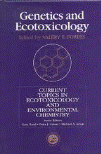Papers in the Biological Sciences

Valery Forbes Publications
Document Type
Article
Date of this Version
2009
Citation
Marine Pollution Bulletin 58:11 (November 2009), pp. 1664–1670; doi: 10.1016/j.marpolbul.2009.07.001
Abstract
Indigenous organisms can be used as bioindicators for effects of contaminants, but no such bioindicator has been established for Arctic areas. Orchomenella pinguis is a benthic amphipod, ubiquitous in the Arctic and can be found in high numbers. We collected O. pinguis at sites with different contamination levels. Population characteristics (body length distribution, average dry weight and amphipod organic content) were related to sediment contaminant concentrations, in order to identify suitable endpoints for using this species as a bioindicator. We show that O. pinguis was prevalent in both clean and contaminated areas, easy to sample and that its population characteristics could be linked to both contamination and sediment organic content. We suggest that O. pinguis is a suitable bioindicator for the Arctic, but that endpoints such as reproductive effects and phenotypic and genotypic responses are needed together with population characteristics to assess impacts of contamination.
Included in
Aquaculture and Fisheries Commons, Other Pharmacology, Toxicology and Environmental Health Commons, Terrestrial and Aquatic Ecology Commons, Toxicology Commons


Comments
Copyright © 2009 Elsevier Ltd. Used by permission.